While it is fun to entertain the idea that NTN equipment is offering new possibilities without a duckbill, there are a few of us who still recognize the value of the duck and we’re not all quacks even if you think we are. To the young and inexperienced it is easy to become fascinated with new technology. However, for proof the duck is not silly or backwards, consider the Amish and Luddites, who aren’t as dumb as you think. Likewise the Nordic Norm way, which is not the fastest, nor lightest way to travel on skis, but is simple, elegant in its ugliness, functionally versatile and comfortable.
Simplicity
Let’s start with the simplicity of the duckbill for what it accomplishes on its own. With a duckbill the sole of the boot is intimately linked with the soul of the turn. It provides something for your foot to bend against so you can balance between your toe and the ball of your trailing foot. Pretty damn fun when you figure it out and leather remains the most tactile way to feel a telemark turn.
As smooth as leather can feel, it simply isn’t meaty enough to drive today’s fat skis. Thank Black Diamond and Scarpa for bringing the dream of plastic tele boots to fruition. I was a late adopter but even I finally caved and switched to PTBs and cables so I could charge and keep up with the AT brethren. With the addition of free pivots to the tele equation, I can keep up when going up too.Even though telemark equipment has gone through dramatic upgrades in materials technology, the simplicity of how the system works remains the same.
Ugly Elegance
If the sole of the boot is the soul of the turn, the binding is like a tendon connecting the boot’s muscle to the backbone of the ski. The first telemark bindings were simple bails that clamped down on the bill of the duck with three alignment pins poking into holes beneath the tip of the toe. The sole was wedge shaped and asymmetric, yielding a dedicated left and right binding.
That simplicity is at the heart of the original binding for duckbills, the veritable 3-pin. Think of it as the single speed bike of telemark bindings. All it does is clamp the bill of the duck at the toe of your boot. The rest is up to how you use those boots. With asymmetric, wedge-shaped sidewalls the binding is not a thing of beauty to behold. Still, that doesn’t mean there haven’t been elegant versions of the 3-pin. Chouinard’s 3-pin in the late 80s was the lightest and easiest to get in to with a bale that moved freely, yet locked securely. The only 3-pin binding easier to get into is Burnt Mt. Design’s TeleBulldog, the first and still only true step-in telemark binding. Alas, with a stainless steel frame, it is around a pound per foot, but worth every extra ounce for the convenience it provides, including ski brakes.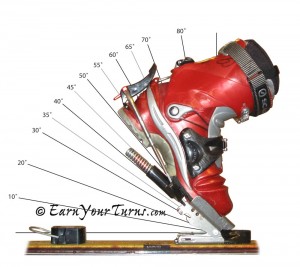
Axl delivers a solid 45° ROM delivers all the freedom you need, with the uncompromised power and adjustability of a Hammerhead.
Functional Versatility
In the duckbilled, 75mm norm telemark system a whole range of possibilities is available. When dropping knees not everyone likes the same level of tension, but the market offers several options, from dead neutral with a 3-pin, moderately active via the Switchback, up through the highly tensioned son of Hammerhead, Axl. Except for the Spartan 3-pin, all these bindings also offer the antidote for too much resistance — a free-pivot for frictionless skinning.
AT gear offers a free-pivot too, but few bindings with training heels can shift-on-the-fly to tour mode. They require a pit stop to change modes. Inexperienced AT skiers might say they don’t need this feature. That may be true, but if you spend enough time earning your turns, you’ll find plenty of times you want the ability to shift-on-the-fly and just shuffle along without bothering to put on skins.
Some might say that getting in and out of a 75mm tele binding is a pain because you have to bend over to latch the cable on your heel. Indeed, alpine and NTN bindings might be easier to get in to, but they don’t tour as well as any free pivoting tele binding. In addition we all know plenty of AT skiers who spend more time fussing with their dynafiddle toes than it takes to jam our funny duckbilled boots into the toe then bend over and latch the cable on. It’s a one and done deal. In addition to shift-on-the-fly mode switching, it is far easier with a flexible boot/binding system to rip the hide without taking your skis off. When seconds make the difference between fresh tracks and sloppy seconds, you’ll appreciate the efficiency during transitions.All the extra options you might want as a ski mountaineer exist for the duckbilled system, including ski crampons. Admittedly most 75mm system ski crampons don’t attach as elegantly as the 2-pin system, but NTN has nothing to offer for this utility. There are even boot crampons that work with duckbilled boots, but not necessarily with NTN’s shorter but fatter toe.
From an economic standpoint, going with a 75mm system is the least expensive way to acquire the gear needed to telemark. There is probably more used duckbill gear gathering dust, ready to be put to good use in the field than NTN gear sold since its introduction.If there is one area that 75mm tele systems take heat it is for the apparent lack of bindings with a safety release. They do exist, or did, but despite the availability of a binding with safety release that many claim to want, few appear willing to buy a pair. Perhaps it is because with the inherent flexibility of the telemark system safety release isn’t as necessary as it is with a rigid alpine system.
That 75mm tele systems have reached their limit in functionality is not a question. Rather, the question remains whether those limits are worth the cost and time it takes to develop a system that can overcome them. Considering how long it took for 75mm to reach maturity, one has to wonder if there are enough tele kids to justify another 20 years to perfect an alternate system?
Comfortable Shoes
While great strides have been made recently to make rigid-soled AT boots more comfortable, these boots simply cannot compare to, as an extreme example, the comfort of a leather telemark boot, or more commonly, the comfort of a plastic telemark boot that flexes in the sole allowing natural foot flexion. Compared to NTN, there are more duckbilled models available, though admittedly not by much.
AT boots may be lighter, while NTN boots already are. However telemark grew heavy to reach parity with alpine for downhill control, and to a lesser extent, to add a frictionless tour mode. Superiority in these realms was never the goal, and it seems unlikely that light but stiff materials like Grilamid can be used in place of Pebax whose inherent softness is part of the equation that creates the sweet tele flex.Nonetheless if there is a place to complain about the 75mm telemark system it is with the cuff range of motion in PTBs which is embarrassingly inferior to lightweight AT boots. Though 75mm systems are acceptable as is, no one would complain one iota if somebody would make a duckbilled PTB with a cuff ROM that was closer to what AT boots offer. Again, we don’t need superiority for cuff ROM, or even parity, but being in the same league would be nice, and might even create some demand for buying a new pair of boots.
© 2014

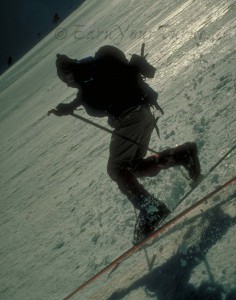
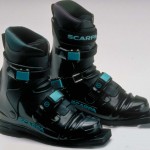
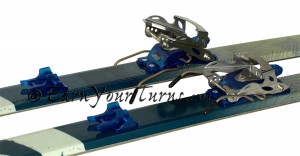
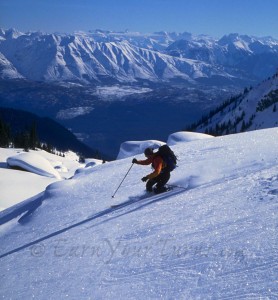
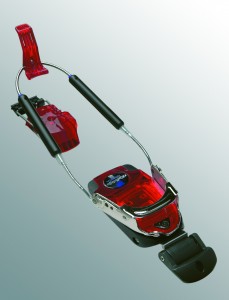
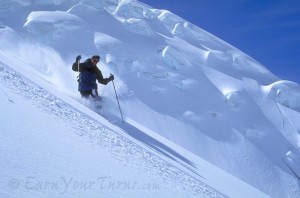
3 comments
1 ping
I’ve slowly started to hate the duckbill mainly because I prefer a non-duckbill boot for crampons and climbing. However, I still prefer Axls over all other tele bindings so I am probably staying with the duckdong until 22Designs has their NTN out in Fall 2015.
It is probably just wishful thinking, but I can’t help but wonder if the 2014-15 new Scott 75mm boot mentioned in the Boot Roundup article will have improved ROM. The Garmont EnerG (now at least 5 seasons out of production) is still my favorite tele boot so reviving it with improved ROM would be a dream come true.
I would love to hear any inside intel about next year’s Scott boot.
Releasable duck bill bindings: we have the surviving integrated unit, the 7TM. And we have Telebry Safeout release plates. The latter offer the prospect of easy binding switches (other things equal re boot/ski alignment). I’ve used them for some years and like the insurance even though I look like a dork on the early morning groomers when an edge catches the ice and I go sprawling.
I get what you’re saying in the first para. Can be awkward. Can also sometimes be handy kicking that bill into the snow when bootpacking up.
[…] Posts In Defense of the Duckbill Telemarking: Neither Dead nor […]